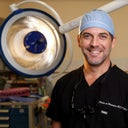Is it common practice to use a SCD during a tummytuck and give a patient blood thinners post surger?
Answers (8)
From board-certified doctors and trusted medical professionals
Dr. Ronald J. Edelson, MD

Dr. Ronald J. Edelson, MD
Board Certified Plastic Surgeon
Answer
Dr. Kenneth Hughes, MD

Dr. Kenneth Hughes, MD
Board Certified Plastic Surgeon
Answer
Dr. George Bitar, MD

Dr. George Bitar, MD
Board Certified Plastic Surgeon
Answer
Dr. Kevin Brenner, MD, FACS

Dr. Kevin Brenner, MD, FACS
Board Certified Plastic Surgeon
Answer
Dr. Martin Jugenburg, MD

Dr. Martin Jugenburg, MD
Certified Plastic Surgeon
Answer
Dr. York Jay Yates, MD

Dr. York Jay Yates, MD
Board Certified Plastic Surgeon
Answer
Dr. Douglas Leppink, MD
Dr. Douglas Leppink, MD
Board Certified Plastic Surgeon
Answer
Dr. Jourdan Gottlieb, MD
Dr. Jourdan Gottlieb, MD
Board Certified Plastic Surgeon
Answer
More Tummy Tuck Questions
See all Tummy Tuck Q&AWE SEND PRETTY
EMAILS
What’s trending? Who’s turning heads? Which TikTok myths need busting? We’ve got you. No fluff, no gatekeeping—just real talk. Get our free, unfiltered newsletter.